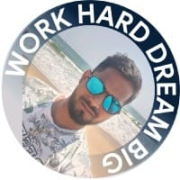


BMC TrueSight Network Automation and Red Hat Satellite are leading network management solutions with distinct strengths. BMC TrueSight Network Automation has an edge in pricing and support satisfaction, while Red Hat Satellite is preferred for its features.
Features: BMC TrueSight Network Automation shines in network change and configuration management, automation, and compliance checks. Red Hat Satellite stands out with robust system management, patching, and provisioning capabilities. Users find Red Hat Satellite's features more comprehensive and aligning better with overall needs.
Room for Improvement: BMC TrueSight Network Automation users highlight the need for improved reporting and user documentation. Red Hat Satellite users seek better integration capabilities and a more intuitive experience. BMC TrueSight Network Automation's gaps in documentation are more frequently mentioned, while Red Hat Satellite users desire more integration improvements.
Ease of Deployment and Customer Service: BMC TrueSight Network Automation deployment is straightforward, with strong customer support. Red Hat Satellite is also user-friendly but requires more initial setup. While both platforms receive positive feedback for customer service, BMC TrueSight Network Automation's easier deployment gives it an edge.
Pricing and ROI: BMC TrueSight Network Automation is praised for its competitive pricing and faster return on investment. Red Hat Satellite, although priced higher, is seen as delivering substantial long-term value. Users acknowledge the higher initial cost of Red Hat Satellite but feel the extensive feature set justifies the expense over time.
Everything we've gained from it makes my job easier day after day, and I see value in it as an engineer.
Importantly, when someone leaves the company, it helps protect document access on their devices.
Applications are deployed through Intune, and we see fewer tickets for common issues because we can resolve them through the solution.
The ROI is substantial because it saves many labor hours and reduces errors in configuration, leading to better services for our customers.
When a support ticket is submitted, it directly reaches someone with Intune support expertise.
When I contacted Microsoft, they had the same expertise, if not more, which is phenomenal because I felt heard and my problem was solved.
Sometimes, the support provided is excellent, and the representative is knowledgeable, while other times, the service needs improvement.
Red Hat provides one of the best customer support services.
The scalability of Microsoft Intune is ten out of ten.
Ideally, we want to automatically segregate devices based on user properties like primary use, but currently, dynamic groups seem limited to device properties.
It supports organizations with 200 endpoints and those with more than 15,000 endpoints.
It has been deployed with large customers without any scalability problems.
We have not experienced downtime, bugs, or glitches.
Microsoft Intune has been very stable.
A couple of years ago, the performance was not as good as it is now, but there are noticeable backend improvements.
The stability of Red Hat Satellite is excellent.
Features like unlocking devices sometimes fail, and the support offered for other operating systems is insufficient.
There are communication issues, so you might start working with a feature without knowing if it will be deprecated six months from now.
Many third-party companies offer single-pane-of-glass reporting that shows you what your update environment looks like, how your patch is doing, application status, etc., but Intune's reporting is not intuitive.
Customers still find migrations a complex process.
Introductory professional services, like a fast-track service, were included with our E5 membership, and there have been no additional costs.
The Intune suite and add-ons, such as batch management and remote help, are costly.
It costs approximately forty euros per user per month.
We have won public offers, demonstrating it is a competitive solution in pricing.
Intune excels in configuration and compliance management for Windows 10, ensuring devices receive timely updates and adhere to organizational standards.
Dynamic groups allow us to set conditions for automatic membership, eliminating the need for user intervention or manual review and ensuring a seamless workflow.
Windows Autopatch is the most valuable because it removes the burden of patch management.
Complex configurations for upgrades and application patches are handled expertly with Red Hat Satellite.



Microsoft Intune provides centralized management of mobile devices and applications, ensuring security, compliance, and productivity through integration with Microsoft services like Microsoft 365 and Azure Active Directory.
Organizations use Intune for managing mobile devices and applications, enhancing security and compliance across platforms. With features like single sign-on, conditional access, and zero-touch deployment via Autopilot, it facilitates efficient operations. Intune's scalability, easy enrollment, and capabilities such as remote wipe support diverse device management, offering robust data protection and efficient operation. Despite its features, improvement areas include reporting, compatibility with non-Microsoft devices, and better support for macOS and Linux devices.
What are the key features of Microsoft Intune?
What benefits should users look for in reviews?
In industries such as finance, healthcare, and education, Microsoft Intune is implemented to ensure secure and compliant device management. Companies leverage its capabilities to deploy security policies and manage both corporate-owned and BYOD environments, facilitating a unified approach to data protection and compliance.
Network automation and management software reduces network outages and downtime by automating configuration, change and compliance processes. Organizations depend on high performance across their network to keep the business running at peak efficiency but new security threats make it hard for network administrators to keep pace with the demands for new services and safeguard the health of the network.
Red Hat Satellite is a powerful system management tool that is designed to enable users to maximize the effectiveness of any Red Hat infrastructure solutions that they wish to deploy. It can automate most of the management tasks that administrators would otherwise have to manually perform. This enables businesses to avoid the possibility that human error is going to in some way reduce the efficiency of their operations. Additionally, it increases an organization’s ability to address all of its strategic business needs effectively. It can be used across a wide variety of environments that include physical, virtual, and cloud environments.
Red Hat Satellite Benefits
Some of the ways that organizations can benefit by choosing to deploy Red Hat Satellite include:
Red Hat Satellite Features
Reviews from Real Users
Red Hat Satellite is a highly effective solution that stands out when compared to many of its competitors. Two major advantages it offers are its integration suite and its advanced patch management capabilities.
Jayasunder S., the principal architect at Wipro Limited, writes, “It's really integrated with agencies that have core systems and other core management platform products or IBM products. You don't need to depend on any third party. It's a complete solution for patch and configuration management when integrated with the existing system.”
Erik W., the senior Enterprise Engineer at a transportation company, says, “The patch management and insights connector are great. Patch management has enabled us to patch every month, keeping abreast of critical and important patches, view where things are lacking, and generate plans to mitigate issues. Due to the work being done in a tool, reporting allows us to see what has been done to what servers.”
We monitor all Configuration Management reviews to prevent fraudulent reviews and keep review quality high. We do not post reviews by company employees or direct competitors. We validate each review for authenticity via cross-reference with LinkedIn, and personal follow-up with the reviewer when necessary.